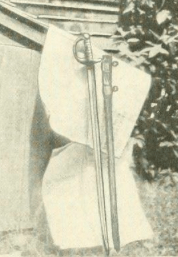Johnson Harmon facts for kids
Colonel Johnson Harmon (born around 1675, died 1751) was an important army officer in early America. He lived during a time when European settlers were expanding their lands. Harmon is best known for leading a group of soldiers during a conflict called Dummer's War.
In this war, he led an expedition that resulted in the death of Father Sébastien Rale during the Battle of Norridgewock. When Harmon returned to Boston, he was celebrated as a hero. A historian named Samuel Penahallow even called the attack "the greatest victory we have obtained in the three or four last wars."
Contents
A Life in Colonial Wars
Johnson Harmon grew up in York, a town that was often involved in conflicts. As a teenager, he experienced the Raid on York (1692) during King William's War. This was a time when different groups fought over land and power.
Early Military Actions
Harmon continued to be involved in military events as he grew older. During Queen Anne's War in 1707, he helped defend Winter Harbour (now Biddeford, Maine). He and his younger brother, John, helped fight off an attack by about 50 canoes. Sadly, one person named Benjamin Donnell was killed in this fight.
Captured and Released
Later, in 1710, a group of 60 to 70 Native Americans attacked Winter Harbour again. They killed a few people and took many others prisoner, including Harmon. He was held captive in Chambly, Quebec. Harmon was eventually released in 1711 as part of a prisoner exchange. He was traded for someone who had been captured during the Raid on Haverhill (1708).
Leading the Norridgewock Expedition
Harmon was a key figure in the events leading up to the Battle of Norridgewock. A year before this battle, there was an attempt to assassinate Harmon by the Abenaki people, but it failed. Harmon had close family connections to others involved in the Norridgewock expedition. His brother-in-law, Colonel Jeremiah Moulton, was the second-in-command. Also, the soldier who killed Father Rale, Richard Jacques, was Harmon's son-in-law.
Later Years and Public Service
In 1727, Harmon served as a representative for the Massachusetts General Court. This was an important governing body in the colony. Even at 70 years old, Harmon still wanted to serve. He applied to fight in the Siege of Louisbourg (1745). Although he did not participate in that specific battle, both his brother-in-law, Moulton, and his son-in-law, Jacques, did.



